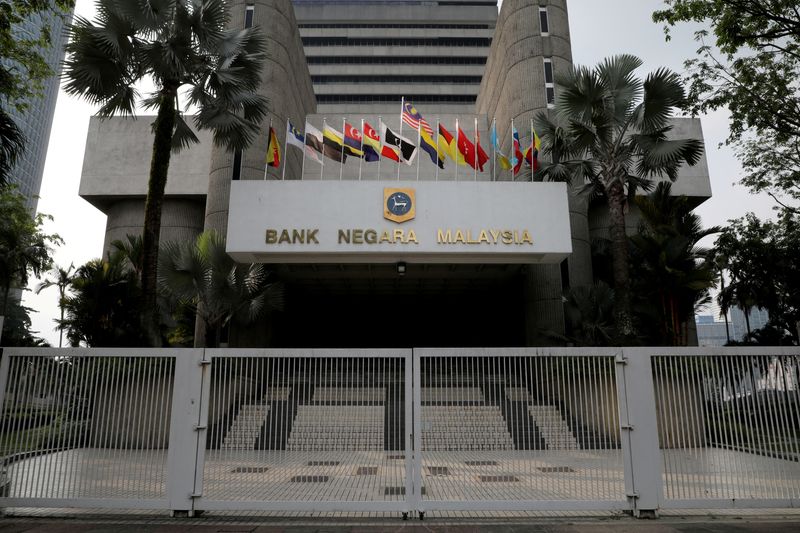
© Reuters. FILE PHOTO: A general view of the Central Bank of Malaysia (Bank Negara Malaysia) in Kuala Lumpur, Malaysia, July 31, 2019. Picture taken July 31, 2019. REUTERS/Lim Huey Teng
By Rozanna Latiff
KUALA LUMPUR (Reuters) – Malaysia’s central bank on Wednesday maintained its economic growth forecast for 2023 at 4% to 5%, saying that improved domestic conditions will likely offset risks stemming from a global slowdown and persistent inflation.
The Southeast Asian country’s economy has bounced back strongly from a pandemic slump, expanding at a 22-year high of 8.7% in 2022, but its outlook for this year has been clouded by cooling global demand.
In documents released with its annual report on Wednesday, Bank Negara Malaysia (BNM) said risks to Malaysia’s economy remain “fairly balanced”, with the country expected to benefit from firm domestic demand, China’s reopening, resilient labour markets, and a recovery in tourism.
Malaysia’s banks remain well-capitalised, BNM said, adding that recent volatility in the global banking sector has had minimal impact on the country’s financial markets.
“(BNM) remains vigilant of potential spillover risks from the global banking sector to the domestic financial markets,” it said.
Headline and core inflation were projected to average between 2.8%-3.8% in 2023, BNM said.
It warned that the inflation outlook remained uncertain and tilted to the upside from higher commodity prices and changes in government subsidy policies, as well as price control measures.
The central bank left its key interest rate unchanged at its two previous meetings this year, citing a need to assess the impact of four consecutive rate hikes in 2022 on the economy.
Going forward, BNM said its monetary policy considerations will continue to focus on managing inflation risks while supporting sustainable growth.
“Given the lingering uncertainties, any potential adjustments to the degree of monetary accommodation will be guided by the impact of evolving developments on balance of risk to inflation and growth.”





